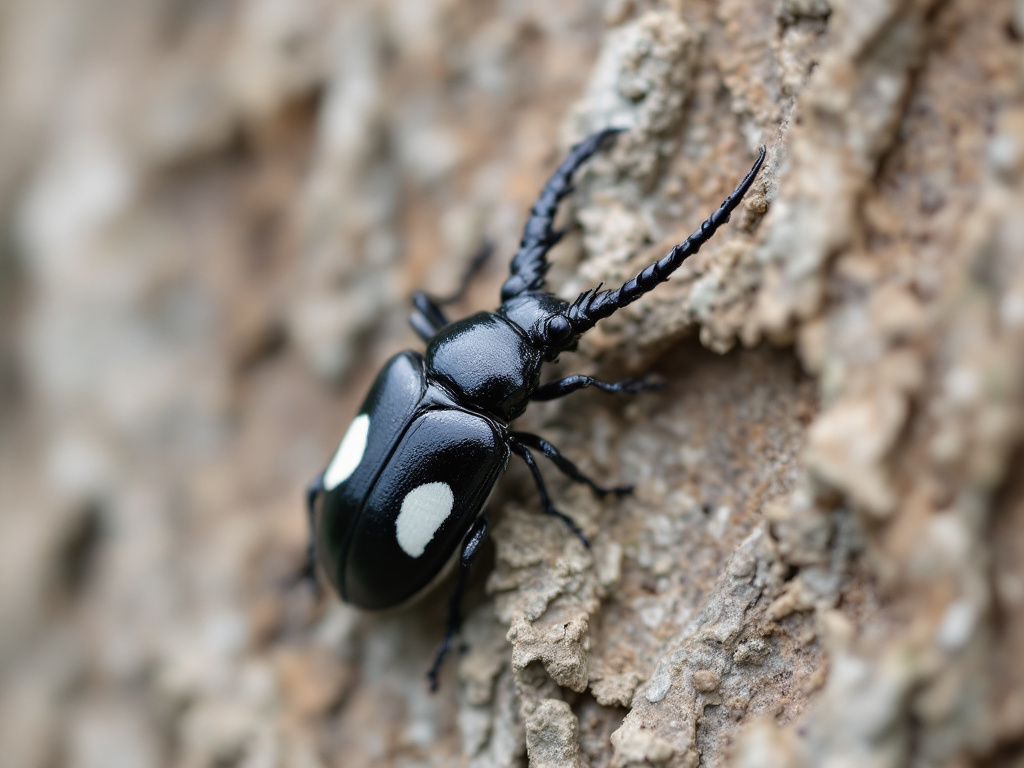Image generated by flux-ai.io & content generated by ChatGPT Version 4o-mini
Beware the Citrus Longhorned Beetle: A New Threat to Florida’s Trees
Residents of Charlotte County, Florida, might want to keep a close eye on their trees and gardens. A recent study highlights the potential risk posed by the citrus longhorned beetle (CLHB), a pest that could threaten not just our beloved citrus trees but also a variety of hardwoods and ornamental plants.
What is the Citrus Longhorned Beetle?
The citrus longhorned beetle is a large, stout insect that can grow up to 1.5 inches long. It has shiny black bodies with distinctive white spots. These beetles love to munch on healthy trees, tunneling into the bark and disrupting the flow of water and nutrients. This can lead to rapid decline and even death of the affected trees.
Originally from Asia, this beetle was first spotted in the United States in Washington State in 2001. Despite successful eradication efforts there, the beetle remains a significant threat due to increasing global trade and the movement of plants.
Why Should We Care?
Charlotte County is home to numerous citrus groves and a variety of trees that could serve as hosts for the CLHB. The county’s climate is perfect for citrus farming, and our local economy relies on agriculture, especially crops like oranges and other fruits. If the CLHB were to establish a population here, the economic impact could be severe, potentially affecting local farmers and businesses reliant on healthy crops.
Moreover, this beetle can attack over 100 species of trees, including popular varieties like maples, poplars, and willows. This means not only our citrus trees could be at risk, but also many of the shade and ornamental trees that beautify our neighborhoods.
How Does It Work?
The beetle lays eggs under the bark of trees. Once hatched, the larvae tunnel through the wood, creating damage that can weaken trees and make them more susceptible to diseases. The adult beetles also feed on leaves and twigs, but the real danger comes from the larvae.
An important point to note is that unlike many native pests that typically target dead trees, the CLHB attacks healthy ones. This makes it particularly concerning for homeowners and gardeners.
What Can Be Done?
There are steps that residents can take to protect their trees from this pest. One effective method is through sanitation. This means removing and destroying any infested plant materials while being cautious to avoid creating additional pests or diseases. Also, using physical barriers like wire netting at the base of trees can help prevent the beetle from laying eggs.
It’s crucial for residents to monitor their trees frequently. Regular inspections can help detect pest problems early. Residents should check for any signs of CLHB and report them to local authorities, such as the Charlotte County Cooperative Extension Service or the Florida Department of Agriculture. They can provide guidance and, if necessary, initiate control measures.
Additionally, when managing pests, it is advisable to use selective rather than broad-spectrum insecticides, treating only affected areas rather than blanket spraying. This approach helps protect beneficial insects and the environment. Always read and follow insecticide label instructions.
Conclusion
As Charlotte County continues to grow, so does the risk of new pests like the citrus longhorned beetle. By staying informed and vigilant, residents can help protect their trees and local agriculture from this invasive threat. Keeping our trees healthy not only preserves our beautiful landscapes but also supports the local economy and community. Let’s work together to safeguard our environment for generations to come!
References
EENY357/IN633: Citrus Longhorned Beetle, Anoplophora chinensis (Forster) (Insecta: Coleoptera: Cerambycidae). (n.d.). Ask IFAS – Powered by EDIS. https://edis.ifas.ufl.edu/publication/IN633

